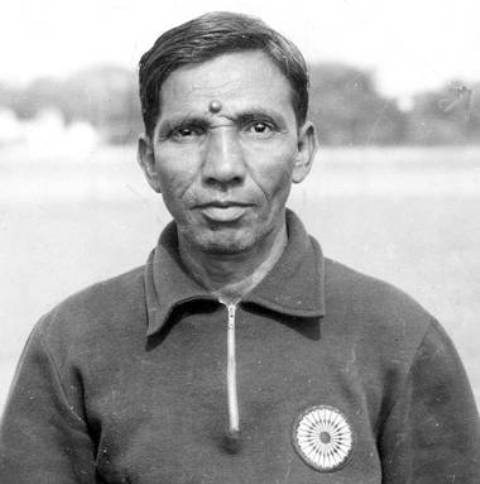Syed Abdul Rahim, the architect of modern Indian football, led the Indian team to the 1956 Melbourne Olympics semi-finals. His passion for sports began in childhood, showcasing exceptional football talent from a young age. This post delves into the life and career of this legendary figure.
Biography/Wiki
Born on August 17, 1909, in Hyderabad, Syed Abdul Rahim was a true all-rounder. He excelled in academics and participated actively in school sports and athletic events. The rise of football culture in Hyderabad during the mid-1920s captivated Rahim, leading him to play for the Osmania University football team. After graduating, he began his career as a school teacher before dedicating himself to coaching, ultimately guiding India to footballing glory.
Family
Syed Abdul Rahim was married and had a son, Syed Shahid Hakim, a former Olympic football official and FIFA official.
Coaching Career
Known as the “Stan Cullis of India,” Rahim was among Hyderabad’s greatest players from the 1920s to the early 1940s, playing for the Qamar Club, a top team in Hyderabad’s local league. In 1939, the Hyderabad Football Association was formed. Three years later, S.M. Hadi became its president, and Rahim became the secretary, a position he held until his death.
Rahim’s coaching style was unconventional yet highly effective. He organized custom tournaments to hone players’ reflexes, speed, stamina, skills, and techniques. Rejecting the traditional British dribbling-focused approach, he emphasized passing and ambidextrous play.
After becoming coach of the Hyderabad City Police (HCP) team in 1943, he quickly transformed them into a dominant local force. Their victory in the Ashe Gold Cup final in Bengaluru against the Royal Air Force (which included England’s cricket and football international Denis Compton) propelled them to prominence. They even challenged established Bengal teams, defeating Mohun Bagan in the 1950 Durand Cup final.
In 1950, he took on the role of Indian national football team coach while simultaneously managing the HCP. He overhauled the Indian team, making tough decisions to improve efficiency, even if it meant dropping established stars in favor of new talent.
His impact was immediate. At the 1951 Asian Games, India won gold, beating Iran 1-0 in the final. Despite setbacks like the 1952 Helsinki Olympics (where interference from AIFF officials hindered his team selection), his HCP team continued to dominate, winning all 12 national tournaments between 1950, 1957, and 1959. He also played a pivotal role in uniting Hyderabad and Andhra into a single Andhra Pradesh Football Association.
The 1960 Rome Olympics saw India’s spirited performance, overcoming an initial loss to South Korea with victories over Japan and Thailand.
| Year | Tournament | Result | Significance |
|---|---|---|---|
| 1951 | Asian Games | Gold Medal | India’s first major win under Rahim |
| 1952 | Helsinki Olympics | Poor showing | Highlited the need for boots for Indian players. |
| 1960 | Rome Olympics | Advanced to next stage | Showcased India’s improved spirit and skill. |
| 1962 | Asian Games | Gold Medal | Peak of Indian football under Rahim’s guidance. |
Favourite Things
His favorite football team was Hungary; his favorite players were Gusztáv Sebes and Robert Andrew Fruval.
Death
Syed Abdul Rahim passed away in India on June 11, 1963, at the age of 53 due to cancer. He retired as a high school principal but remained involved with football until his death. While he may not have received the full recognition he deserved during his lifetime, the I-League trophy and the “Syed Abdul Rahim Best Coach Award” are fitting tributes to his legacy.
Facts
- Syed Abdul Rahim was a smoker.
- Under his coaching, the HCP team won five consecutive Rovers Cups – a record that still stands today. They also reached five Durand Cup finals and won three of them.
- The 1952 Helsinki Olympics highlighted the lack of proper equipment for the Indian team (lack of boots). This led the AIFF to mandate the use of boots for Indian players.
- Inspired by Hungary’s 4-2-4 formation after the Olympics, Rahim changed the Indian team’s formation, a decision that initially faced resistance but ultimately proved successful, leading to a win over Pakistan in the 1952 Quadrangular Tournament in Dhaka.
- Despite a group stage exit at the 1954 Asian Games, India’s unexpected quarter-final victory over host Australia (finishing 4th overall) demonstrated Rahim’s motivational skills and his team’s resilience.
- At the 1960 Rome Olympics, India faced a tough group (Hungary, France, and Peru). Despite losses to Hungary and Peru, a draw against France showed competitive spirit.
- The 1962 Asian Games gold medal was a monumental achievement, especially considering the challenges faced by the team due to global political situations which forced most athletes to fly back early. Rahim’s motivational speech inspired the team to an unexpected victory over South Korea.
- The period from 1945 to 1965 is considered the “Golden Era of Hyderabad Football,” and 1951 and 1962 are remembered as the “Golden Era of Indian Football,” a testament to Rahim’s impact.
- Ajay Devgn is set to portray Syed Abdul Rahim in a biopic produced by Boney Kapoor and directed by Amit Sharma.







